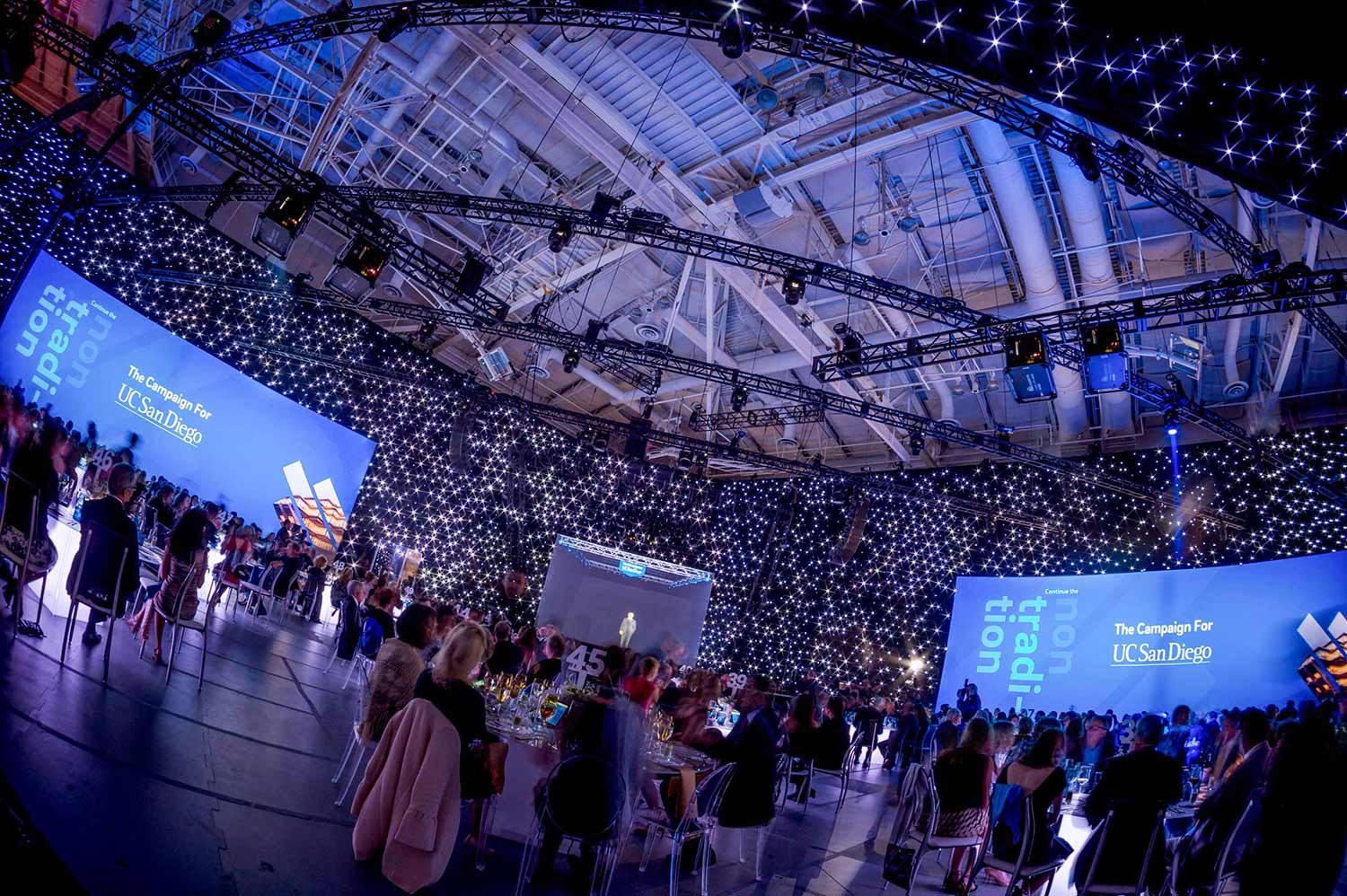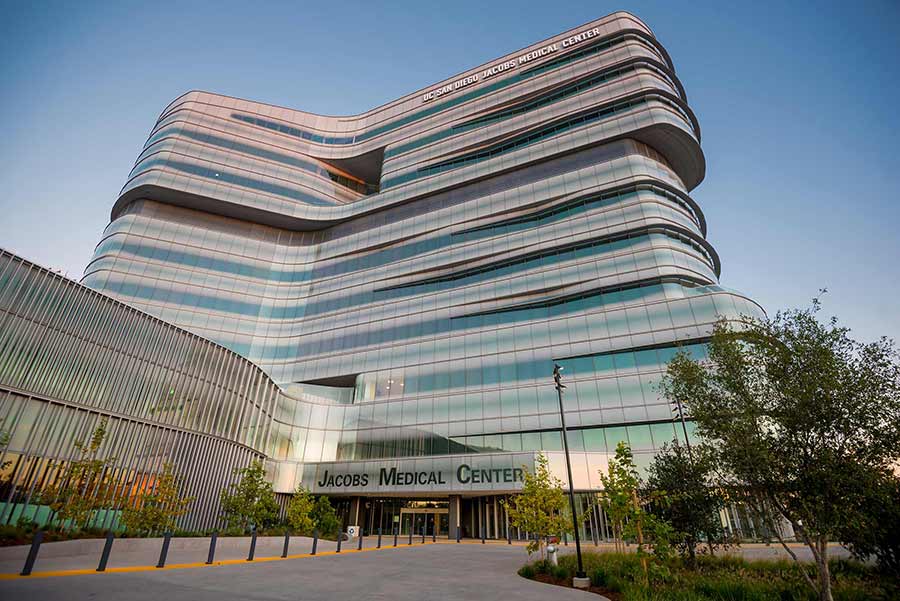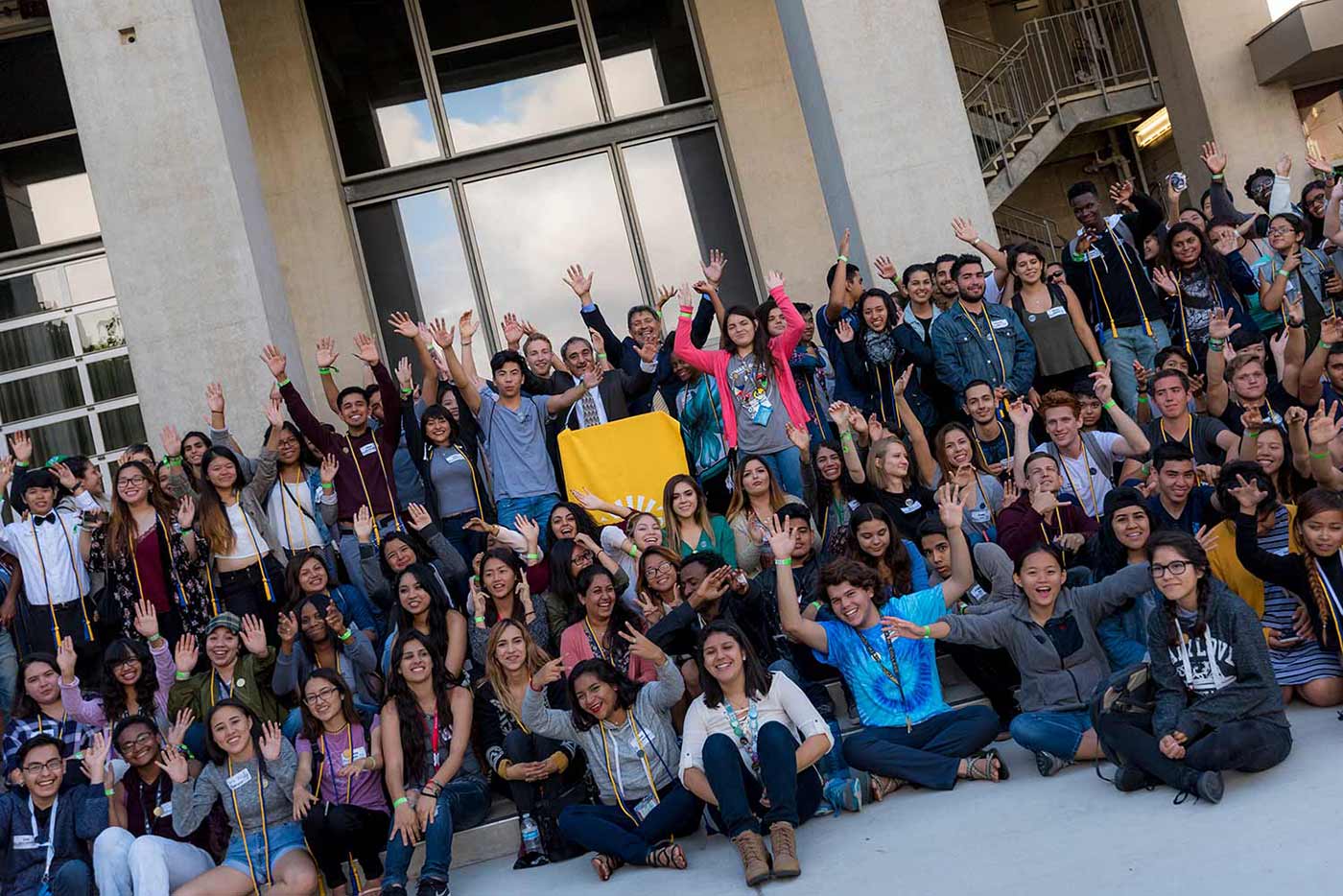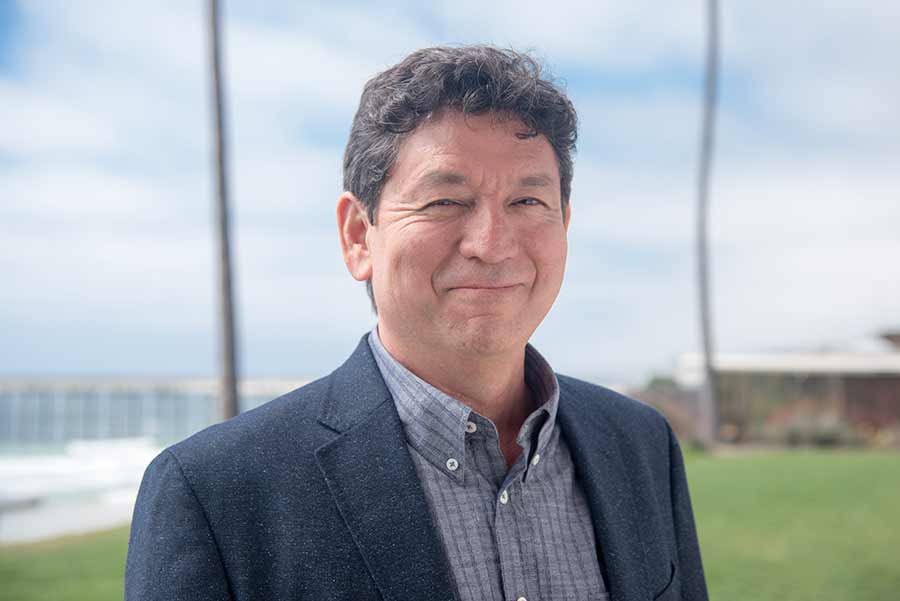
By:
- Kristin Schafgans
Published Date
By:
- Kristin Schafgans
Share This:

Photo by Erik Jepsen/UC San Diego Publications
One Year Later: The Campaign for UC San Diego Makes Waves
UC San Diego is in the midst of a major transformation. Walk through campus and you can’t miss the physical changes that are coming to life. Beyond the new buildings, there is an intellectual and cultural transformation underway that is re-energizing the student experience, sparking breakthrough research and innovation, and creating a true learning-living environment.
Fueling this growth is the Campaign for UC San Diego and, just one year since its public launch, the impact of philanthropic support is already making waves across campus. More than 110,000 donors have contributed, giving more than $1.5 billion toward the Campaign’s $2 billion goal.
“Through our transformation, we are creating opportunities for our campus members so they can continue to make our world a better place,” said Chancellor Pradeep K. Khosla. “Fostering an underlying culture of philanthropy is essential if we are to continue to evolve as an experimental, futuristic campus that is focused on the public good.”
Enriching the campus community
The growth of UC San Diego is designed to foster a more connected campus that will increase our positive impact on local and global communities. On east campus, UC San Diego Health is undergoing expansions and enhancements to transform patient care for the campus and the region.
Jacobs Medical Center, which opened in 2016, represents the epitome of what modern medicine has become at the nation’s top academic medical centers—advanced technologies supporting highly specialized care, delivered by multidisciplinary teams of doctors, nurses and technicians. Its forward-looking approach to medicine could only be realized with the support of many generous donors, including Joan and Irwin Jacobs, for whom the building is named.

Jacobs Medical Center opened its doors in 2016 to transform patient care for the community. Photo by Erik Jepsen/UC San Diego Publications
More recently, the Koman Family Outpatient Pavilion opened at the La Jolla campus in March. The new facility offers the best in clinical care and translational medicine in one location, so that patients need not travel from site to site for different treatments. The Pavilion is named in honor of Bill and Amy Koman and family in recognition of their generosity and dedication to advancing health care in San Diego.
“We are keenly aware and appreciative of the importance of top-notch, local health care,” said two-time cancer survivor Bill Koman. “Our family is committed to supporting the development of academic medical centers and teaching hospitals that offer the research, technology and care that drive 21st century medicine.”
Among the changes happening on main campus is a renewed commitment to public art. From the iconic “Sun God” to the gravity-defying “Fallen Star,” the renowned Stuart Collection encourages campus members and visitors alike to engage with art in a nonconventional manner.
Last summer, the campus celebrated the installation of the newest piece, “The Wind Garden” by Pulitzer Prize-winning composer John Luther Adams, thanks in part to a $1 million gift from Mary Looker.
Launched more than three decades ago by the vision and philanthropy of James Stuart DeSilva, the Stuart Collection is completely self-sustaining, relying on the generosity of donors to fund new projects. Looker’s gift created a permanent endowed fund—the first for the Stuart Collection—to help supplement fundraising for new commissions, and ensure that this treasure trove of public art continues to flourish at UC San Diego for years to come.
Enhancing the student experience
The campus transformation is also changing the life of our students, strengthening access and affordability, offering community building experiences, and more.
Environmental systems major Lexius Waltar is the first in her family to attend college, an opportunity that has expanded her horizons more than she could have predicted. She’s studied abroad in the West Indies, mentored incoming freshman through the Summer Bridge program and gotten involved with the Black Student Union.
“It means a lot to me and my family that I was able to continue pursuing my passions into higher education,” she said.
Waltar is attending UC San Diego thanks to a Chancellor’s Associates Scholarship. Established in 2013, the Chancellor’s Associates Scholars Program aims to ensure access and affordability to higher education for qualified local students. Since its inception, the program has awarded more than 600 scholarships—and its capacity for supporting students is still growing.

The Chancellor’s Associates Scholars Program has benefitted more than 600 students since its inception. Photo by Erik Jepsen/UC San Diego Publications
Longtime campus friends Karen and Jeff Silberman recently made a $1 million gift to Chancellor’s Associates, the largest ever made to the program. Their contribution will provide a dollar-for-dollar match, up to $1 million, to help increase Chancellor’s Associates by 400 new donors this year and in turn, grow its namesake scholarship program.
Once students arrive on campus, they have an increasing number of opportunities to develop skills in leadership, entrepreneurism and social innovation.
For instance, the Gordon Engineering Leadership Center at the Jacobs School of Engineering—which got a $3 million boost from the Bernard and Sophia Gordon Foundation in 2014—provides hands-on leadership training, mentoring, think tanks and more for students who are interested in generating new products and jobs that benefit society.
Over 1,400 students have taken technical leadership courses through the center since its 2009 launch, and more than 230 have been accepted to the Gordon Scholars program, a comprehensive leadership certificate program. Two of these scholars, Darren Charrier and Deepak Atyam, made news in January when they were named to the Mars Generation’s #24Under24 Leaders and Innovators in STEAM and Space.
Sparking breakthrough research and innovation
The Campaign for UC San Diego is also about an intellectual transformation, one that supports interdisciplinary research to tackle some of the most pressing and complex societal challenges.
With Understanding and Protecting the Planet as one of UC San Diego’s strategic research priorities, Scripps Institution of Oceanography has recruited Mark Merrifield, a renowned climate researcher and UC San Diego alumnus, to lead the new Center for Climate Change Impacts and Adaptation.
Established in 2015 with a $5 million gift from Richard and Carol Hertzberg, the center brings together climate scientists as well as experts in economics, urban planning, political science, public health and other disciplines to document the impacts of climate change and develop practical solutions to help communities adapt to changes that are widely seen as inevitable.

Alumnus Mark Merrifield leads the new Center for Climate Change Impacts and Adaptation
The center is expanding some of Merrifield’s existing fieldwork, including a project coordinating with the Department of Defense to observe sea-level rise near local military bases, and working with the National Oceanic and Atmospheric Administration to build a national seasonal forecast system with insight into how sea levels affect coastal flooding.
“We want to be a resource for the community where they can find expert assessments on the current understanding of climate change and what the impacts are likely to be going forward,” said Merrifield.
UC San Diego is also pioneering what is arguably one of the fastest emerging scientific fields: data science. The new Halicioğlu Data Science Institute will harness the power of big data to transform research across disciplines and train the next generation of data science leaders. The institute is named for computer science alumnus Taner Halicioğlu, an early Facebook employee whose $75 million gift was announced at the Campaign for UC San Diego launch last year.
“Take personalized medicine and genomics,” said Halicioğlu. “Gathering, sequencing, analyzing and storing an individual’s genetic makeup will allow physicians to find causes and correlations that can determine how things are related and what they reveal. That’s the kind of fundamental transformation data science is bringing to almost every field.”
In addition to serving as a research hub, the institute is developing a five-year, B.S./M.S. degree program for students interested in specific areas of data science. It will also be a key resource for San Diego’s high-tech and biotech industry, as well as local governments, by offering training programs and opportunities to collaborate on data-science applications for health care, transportation, energy, water and other sectors of the regional economy.
What’s next for the Campaign for UC San Diego?
This is just the beginning of an unprecedented physical, intellectual and cultural transformation powered by private support. In addition to its monetary goal, the Campaign for UC San Diego aims to build a sustainable culture of philanthropy that will enable the campus to continue to drive innovation, advance society, propel economic growth, and, ultimately, solve the world’s most pressing problems.
As UC San Diego Athletics transitions to NCAA Division I, the campus will need to fundraise for scholarships for student athletes as well as sports facility upgrades. As the new North Torrey Pines Living and Learning Neighborhood comes to life, philanthropy will play a critical role in equipping this living-learning experiment with the resources needed to ensure students thrive.
Backed by philanthropic visionaries, UC San Diego will continue to embrace a philosophy of perpetual optimism and inquisitiveness, and a penchant for doing things differently, to make the world a better place.
Share This:
Stay in the Know
Keep up with all the latest from UC San Diego. Subscribe to the newsletter today.


